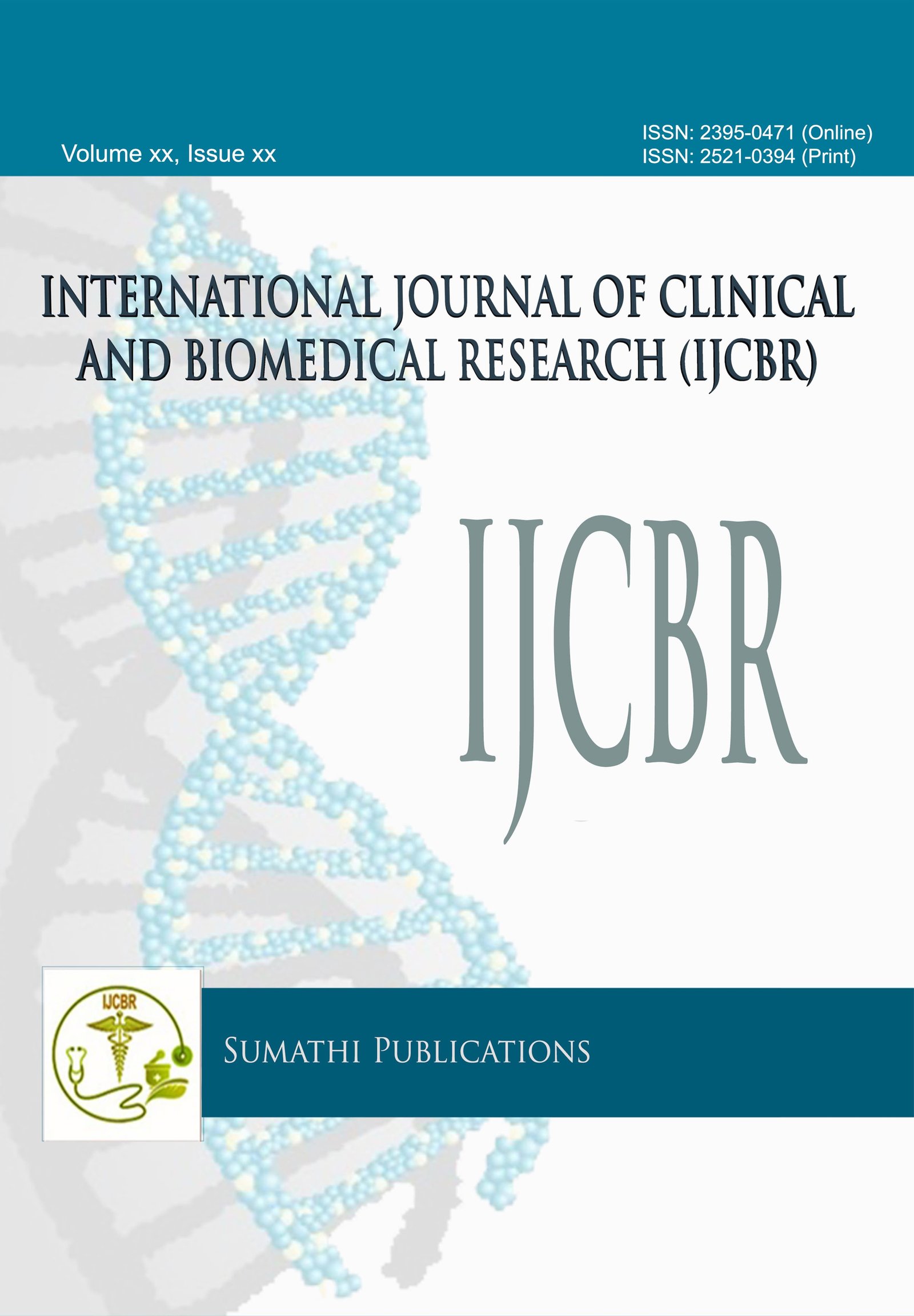ETIOLOGICAL FACTORS, CLINICAL PRESENTATIONS AND TREATMENT OUTCOME OF CERVICAL LYMPHADENOPATHY: AN OBSERVATIONAL DESCRIPTIVE STUDY
DOI:
https://doi.org/10.5455/ijcbr.2018.42.10Abstract
Aim: To study various etiological factors, clinical presentations of cervical lymphadenopathy. To study the management and outcome of cervical lymphadenopathy Method: Proper clinical history was first noted, local and systemic examination was performed and a clinical diagnosis was made. Gender wise distribution, presenting symptoms, site distribution, and treatment outcome were noted. Result: Gender wise distribution of male and female was 52%, and 48%, commonest site of primary in cases of metastatic Secondaries was tongue followed by oesophagus and thyroid. After proper diagnosis confirmed by Histopathology (biopsy), treatment constituted properly- Cases of Tubercular Lymphadenitis (49 cases) were Started on Anti-tubercular treatment, all were showed improvement in symptoms. Cases of Reactive lymphadenitis (26 cases) started on antibiotics, all recovered well. Among 14 Cases of Metastatic secondaries, 5 cases were given Chemotherapy/Radiotherapy after expert oncologist opinion out of which 3 showed improved symptoms and 2 were expired, 6 cases were operated out of which 5 showed improved symptoms and 1 expired post operatively, 3 cases were referred to specialized oncological and oncosurgical center for further management. All 6 Lymphoma cases were started on chemotherapy after expert oncologist opinion showed improvement in symptoms. Conclusion: Commonest site of primary in cases of metastatic Secondaries was tongue followed by oesophagus and thyroid. Anti-tubercular treatment for tubercular lymphadenitis was highly satisfactory with improvement in almost all patients. Surgery was restricted as an adjuvant to chemotherapy, as diagnostic biopsy, for treatment of abscess/sinuses and for a lymph nodes that do not resolve with chemotherapy. Non-tuberculous non-neoplastic lesions can be best managed by conservatively.
Keywords: Cervical lymphadenopathy; Clinical presentations; Treatment outcome.
Downloads
Downloads
Published
Issue
Section
License
The journal allows the author(s) to hold the copyright without restrictions and will retain publishing rights without restrictions.
The submitted papers are assumed to contain no proprietary material unprotected by patent or patent application; responsibility for technical content and for protection of proprietary material rests solely with the author(s) and their organizations and is not the responsibility of the journal. The main (first/corresponding) author is responsible for ensuring that the article has been seen and approved by all the other authors. It is the responsibility of the author to obtain all necessary copyright release permissions for the use of any copyrighted materials in the manuscript prior to the submission.
What are my rights as an author?
It is important to check the policy for the journal to which you are submitting or publishing to establish your rights as
Author. Journal's standard policies allow the following re-use rights:
- The journal allows the author(s) to hold the copyright without restrictions.
- The journal allows the author(s) to obtain publishing rights without restrictions.
- You may do whatever you wish with the version of the article you submitted to the journal.
- Once the article has been accepted for publication, you may post the accepted version of the article on your own personal website, your department's website or the repository of your institution without any restrictions.
- You may not post the accepted version of the article in any repository other than those listed above (i.e. you may not deposit in the repository of another institution or a subject-matter repository) until 12 months after publication of the article in the journal.
- You may use the published article for your own teaching needs or to supply on an individual basis to research colleagues, provided that such supply is not for commercial purposes.









